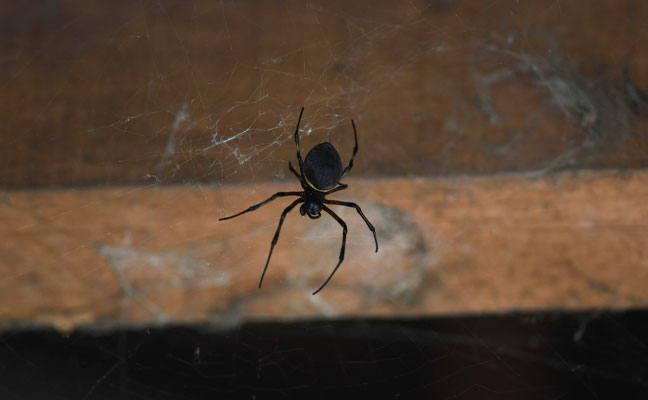While wood-destroying insects are a major structural threat, they are far from the only pests that PMPs will encounter in an attic. This top-floor space is also an ideal harborage for a range of common crawling insects and fabric pests, whose presence can indicate moisture issues and lead to infestations in the living space below.
This article, part of our Top-floor tactics: The PMP’s ultimate guide to attic pest management, details the inspection and treatment protocols for spiders, cockroaches and fabric pests like silverfish and firebrats.
Key takeaways
- Look for root causes: Many common attic pests, like cockroaches and silverfish, are indicators of underlying moisture issues from leaks or poor ventilation.
- Spiders & webs: The presence and type of webs (e.g., funnel-shaped, irregular) are key inspection cues. Treatment should focus on removing webs and applying residual dusts or non-repellent liquid insecticides.
- Cockroaches: American, Oriental and brown-banded cockroaches can all be found in attics. Inspection should focus on moisture sources and treatment involves baits, dusts and IGRs.
- Fabric pests: Silverfish and firebrats thrive in warm, humid attics, feeding on stored paper, cardboard and starches.

Spiders
Many spider species, including both web-builders and hunters, utilize attics. They are drawn by the seclusion and the abundance of other insects (their food source) that also infest the space.
Inspection cues for spiders:
- Webs: Look for the characteristic webs of different species, such as the irregular, tangled webs of cobweb spiders or the funnel-shaped webs of funnel-weavers.
- Sacs: Egg sacs may be hidden in protected corners or voids.
- Live spiders: Use a flashlight to check corners, along joists and under insulation for hunting spiders like wolf spiders.
Treatment strategies for spiders:
- Web removal: Mechanically remove all visible webs and egg sacs using a vacuum or a long-handled brush.
- Residual insecticides: Apply a non-repellent liquid insecticide or an insecticidal dust (such as boric acid or silica) to corners, voids and along the attic perimeter.
- Exclusion: Seal any small cracks and crevices that other insects are using to enter, thereby cutting off the spiders’ food supply.
Cockroaches
While more commonly associated with kitchens and bathrooms, several cockroach species can thrive in attics, especially if moisture is present.
Inspection cues for cockroaches:
- Moisture: Check around any roof leaks, plumbing/chimney penetrations, or poorly ventilated exhaust fans.
- Species: American and Oriental cockroaches may be found in damp, dark areas. Brown-banded cockroaches prefer the warmer, drier areas of the attic and are often found near electrical equipment.
- Evidence: Look for droppings (fecal specks), egg capsules (oothecae) and a “musty” odor in heavily infested areas.
Treatment strategies for cockroaches:
- Address moisture: As with carpenter ants, correcting the moisture source is a critical first step for long-term control.
- Baits: Place cockroach gel baits or bait stations in areas of activity, protecting them from extreme heat.
- Dusts: Apply an insecticidal dust to cracks, crevices and voids where cockroaches are likely to harbor.
- IGRs: Insect growth regulators (IGRs) can be used to disrupt the reproductive cycle of the cockroach population.

Silverfish & firebrats
These fabric pests thrive in the high-humidity, high-temperature environment of an attic. They feed on starches (polysaccharides) found in cardboard boxes, books, wallpaper glue and certain types of insulation.
Inspection cues for silverfish & firebrats:
- Location: Silverfish prefer warm, humid areas (75°F to 90°F), while firebrats prefer even hotter zones (90°F to 106°F), often found near heating elements or hot pipes.
- Damage: Look for irregular holes, feeding marks, or yellow stains on stored cardboard boxes, paper, or fabrics.
- Cast skins: They shed their skins (molt) throughout their lives, leaving behind small, silvery scales.
Treatment strategies for silverfish & firebrats:
- Reduce Humidity: The most effective long-term strategy is to reduce attic humidity through proper ventilation or by addressing moisture leaks.
- Residuals: Apply a residual insecticidal dust or a liquid spray with an IGR to cracks, crevices and areas where items are stored.
- Monitoring: Use sticky traps to monitor the population and confirm the effectiveness of the treatment.
Conclusion
While not as structurally damaging as WDIs, common and fabric pests in an attic are a significant problem that can lead to contamination and infestation of the entire home. A thorough inspection that identifies not just the pest, but also the environmental conditions (like moisture) supporting them, is key to an effective and lasting treatment plan.
Explore the full attic pest guide
This article is the central hub for our complete guide to attic pests. Dive deeper into specific control strategies for the pests you encounter most often.
- Attic pest guide (Part 1): Wood-destroying insects
- Attic pest guide (Part 2): common and fabric pests
- Attic pest guide (Part 3): Stinging and fall-invading pests
- Attic pest guide (Part 4): Rodents and wildlife
- Attic pest guide (Part 5): Birds and associated pests
- Attic pest guide (Part 6): Six reasons why pests love attics
Leave A Comment